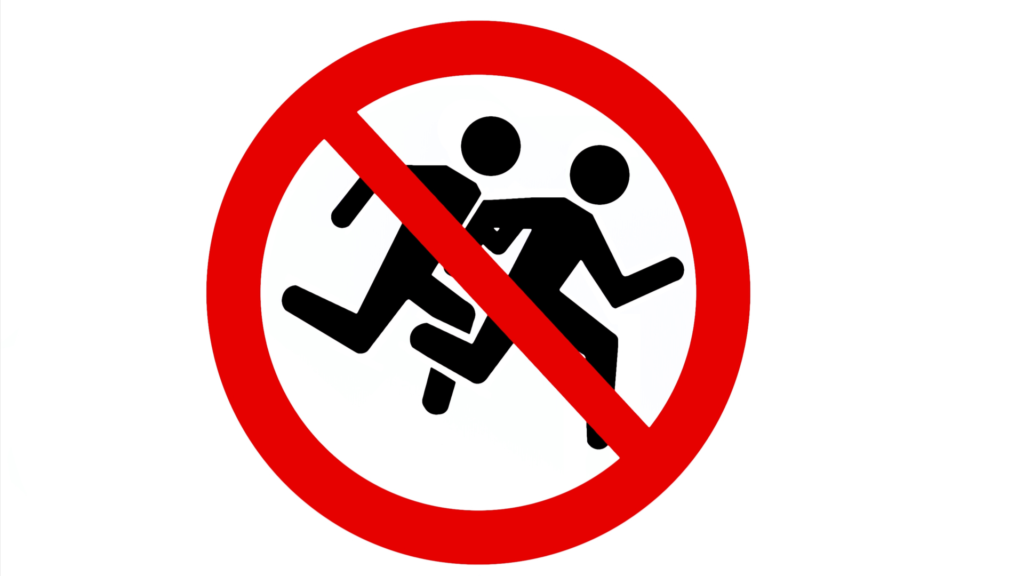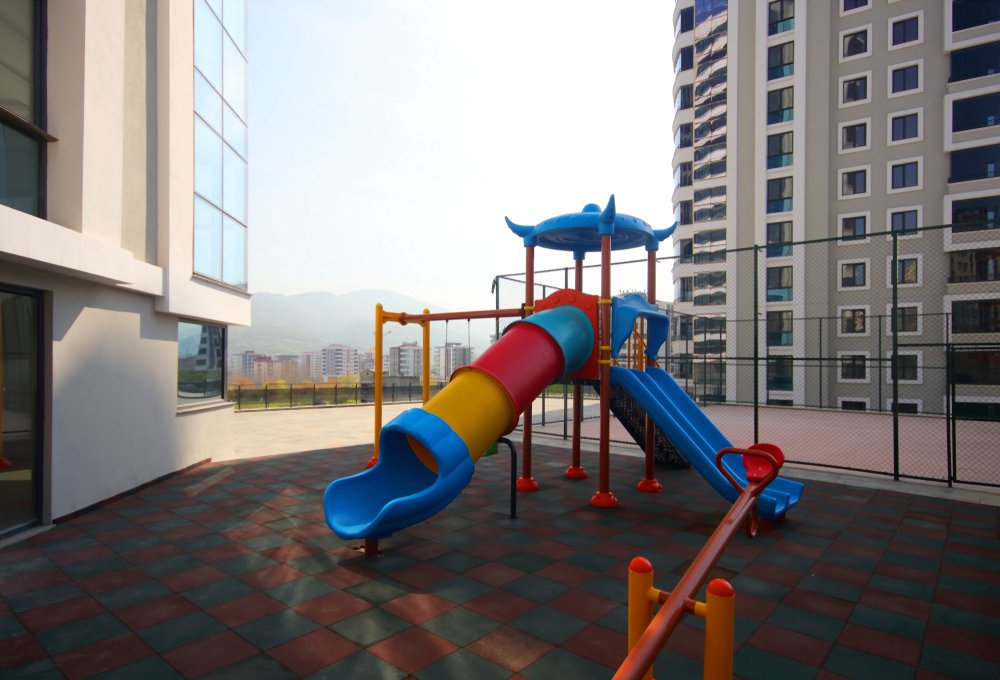Last Updated on January 25, 2024 by Gamesver Team and JC Franco

Tag is a game that involves a tagger and one or several runners. The game can either be played indoors or outdoors and consists of the tagger chasing the runners in an attempt to eliminate them from the competition.
If the runner is caught, they are either out or become the tagger (depending on the variation being played). There are many variants of tag, each with different rules and can be inclusive of exceptions.
The game of tag has been caught up in several controversies recently, especially in schools, because of the mechanisms involved when playing. Several schools in the US have, with good reason, decided to ban the game while others are considering it. Why should tag be banned? Read on to find out.
1. Potential to Cause Bodily Harm
Tag involves a lot of running, chasing, and dodging. The game is mostly done outdoors, and the problem with this is that there can be so many obstacles on the ground, for example, pebbles, roots, and other forms of litter that may cause a child to slip and fall, and this may cause breaking of limbs, fractures, and bruises.
Another potential cause for injuries is “tagging.” Tagging involves tapping the runner when the tagger catches up to them. The problem with this is that the tagger may either accidentally or intentionally cause bodily harm to the runner by using excessive force when tagging.
2. Harassment and Bullying
Tagging is meant to be a harmless game, but it can also be used as the perfect avenue for bullies to harass their victims legitimately. Bullies usually prey on smaller kids, and because this game involves chasing, then they can use it as an opportunity to torture their victims.
They can be tripped, body-checked, chased endlessly, and picked on, all in the name of the game. And this won’t be easy to recognize because it will look just like part of the game.
Bullying is especially a big problem in schools today, and there’s no need to add even more possible opportunities for bullying.
3. Unhealthy Predatory Behavior
Tag is a power game and embodies “survival of the fittest.” The game of chasing is as old as time and can also be witnessed among animals, as they play when small. You can also witness something similar when predators are chasing their prey.
For kids, psychologists claim that the game awakens dopamine, the “feel-good hormone,” which brings about a natural high that kids can get addicted to. This addiction is what both parents, teachers, and psychologists at large want to avoid because it may lead to the development of other predatory tendencies such as more aggressive forms of bullying.
4. Insufficient Supervision
Schools host many kids, and there can only be so many teachers supervising these games because, essentially, these games occur during PE lessons. PE teachers can’t be everywhere, and they miss out on happenings such as bullying and things like minor injuries.
Finding dedicated teachers who care, especially in public schools, can be a challenging task to achieve. There’s already a shortage of teachers in some of these schools, and sometimes they are overwhelmed. Games with the potential for aggressiveness, such as tag, need involved referees.
5. Consent and Boundaries
When played the right way, tag is meant to be a game with rules and exceptions to maintain discipline. Kids should be able to pause the game or opt-out as soon as they feel unsafe. But the game has a lot of potential to skirt around the rules and operate on the grey.
For example, tagging involves touching. What happens to the kids who don’t like getting touched? Do all kids know the amount of force acceptable when tagging their colleagues? This is where the referee comes in, and we have just discussed how inefficient supervising this game can be.
6. Unnecessary Interference From Adults
There’s a growing need to be politically correct, especially in schools these days. Every parent wants things done differently, which is the leading cause of the game being banned in some schools in the US. Some parents believe this game is a good way for kids to let off steam, while others believe it harms the kids more than it does good.
Schools have now come up with rules banning running in tag, and now kids are walking to tag the “runners,” which makes it a different game altogether.
Others have included the “two-finger” tagging rule, where the tagger now only has permission to tag the runner with just two fingers, which removes the fun from the game itself and makes the kids focus on the many rules coming up.
Instead of making it difficult for kids to play, why not ban the game in schools altogether?
7. Discriminatory Tendencies

Games are meant to be inclusive for all students in a class. But this is a game that involves physical exercises, and it’s meant to be a fun way to boost kids’ physical health in schools. But some kids can’t run fast; this includes obese kids, who would benefit more from these games. But obese kids are usually the first ones to be caught because they can’t run far, and they end up sitting out on all the fun.
Other kids who could feel left out are those with physical challenges like those who have to use walking aids, those with diseases such as asthma, among others. What’s the use of playing these games in schools if some kids will be left out? There have to be other games that can enhance being social while including everyone.
8. A Major Cause of Mental Disorders
Childhood trauma is one of the primary causes of mental disorders such as anxiety, depression, and disassociation in kids. The kids who fall prey to harassment can find it hard to cope as they grow up, leading to these mental disorders. This also happens to the children isolated during these games.
9. Potential for Lawsuits
A game that can cause bodily harm is an excellent opening for lawsuits for schools and parents. Imagine a kid getting their limbs broken while playing tag? There are real-life stories of kids dying after stumbling and falling while playing.
The first party to be blamed is usually the school, and these lawsuits can cause losses that would otherwise be used to improve school infrastructure. Kids’ parents may even decide to sue each other- and this happens more than you think.
To avoid these losses, let kids play these games at home where parents can supervise their own kids to prevent injuries and these kinds of losses.
10. Stunted Emotional Intelligence in Kids
Tag is a competitive game, and this requires a winner. These days kids are so used to participation trophies that they have little knowledge of healthy competition. The winner gets all the bragging rights in this one thing, and because of this, unfair dealings such as cheating may occur in a quest to become the winner.
Kids will do anything to win, and this is where their emotional intelligence becomes stunted. They stop worrying about their classmates’ feelings and safety and concentrate on being “crowned” the winner. The rush to win may lead to other ills such as injuries from roughhousing.
11. Limited Play Areas and Equipment
Most schools are built in urban areas and limited spaces. Schools want to expand their infrastructure, which leads to problems of limited space allocated for play. How far will kids run before hitting sitting areas? Can the space earmarked for recess handle entire classes? Let the kids play tag in their own backyard, where they have room.

12. Conflict
Tag brings about different forms of conflict. The first conflict is between the kids playing. Imagine arguing in the playground and translating the same feelings in class? Maybe a friend accidentally caused them to trip and fall, and then the kid would want to retaliate? This can be a significant cause for alarm.
The second conflict would be between teachers and parents. Many parents prefer to wrap their kids in a protective bubble, and any issue to their children causes quarrels and lawsuit threats. This makes teachers fearful and uncomfortable, which is an excellent reason to ban this game and other kinds of games.
The third conflict is between the school administration and policymakers, who can override their rules and undermine them. This is the biggest conflict there is because policymakers have to consider their citizens as a whole; they also prefer to prevent litigation.
All Things Considered
Tag as a game has its advantages. We can consider that the game is an excellent way for kids to exercise, relieve stress, and constructively use their energies. But the controversies that the game has brought about, especially in recent times, have made retaining the game less than beneficial.
There are many safer, noncontroversial games that kids can play socially in schools. We need all kids to enjoy these games without feeling restricted, and there are other avenues for them to play tag. In my opinion, banning them in schools is the safest option for everyone.

